Fishing Guides
A Beginner’s Guide to Smallmouth Bass Fishing
Introduction
If you’re new to the world of fishing and have a passion for catching the elusive smallmouth bass, you’ve come to the right place. Smallmouth bass fishing is an exciting and rewarding pursuit that can be enjoyed by anglers of all skill levels. In this comprehensive guide, we’ll cover everything you need to know to get started on your smallmouth bass fishing journey, from understanding the fish’s behavior and habitat preferences to selecting the right gear and techniques.
You may also like to read “ How to Throw a Small Cast Net Like a Pro” article.
Understanding Smallmouth Bass
Smallmouth Bass Biology and Behavior
Smallmouth bass (Micropterus dolomieu) are a member of the Centrarchidae family, which includes other popular game fish like largemouth bass and sunfish. These feisty fighters are characterized by their bronze-green coloration, vertical bars along their sides, and distinct upper jaw that extends beyond the eye.
Smallmouth bass are typically found in clear, cool lakes and rivers with rocky bottoms and plenty of structure like fallen trees, submerged logs, and boulders. They are aggressive predators and primarily feed on smaller fish, crayfish, and aquatic insects.
Unlike their largemouth cousins, smallmouth bass tend to be less tolerant of warm water temperatures and prefer cooler, well-oxygenated environments. They are also known for their tenacity and willingness to strike a wide variety of lures and baits, making them a favorite target for many anglers.
Smallmouth Bass Habitat Preferences
To successfully target smallmouth bass, it’s crucial to understand their habitat preferences. These fish thrive in areas with moderate to fast-moving currents, as they prefer well-oxygenated water. Look for them near drop-offs, points, ledges, and submerged structure where they can ambush prey.
Smallmouth bass are also known to congregate around areas with rocks, boulders, and gravel bottoms, as these provide ideal spawning grounds and cover. Pay close attention to areas with a combination of structure and current breaks, as these can be prime smallmouth hotspots.
During the spring spawning season, smallmouth bass will often move into shallow, rocky areas to construct their nests. This can be an excellent time to target them, as they will be highly aggressive in defending their spawning beds. However, it’s important to practice catch-and-release during this period to avoid disrupting the reproductive cycle.
In the summer months, smallmouth bass may move to deeper, cooler waters near structure or current breaks to escape the warmest water temperatures. Locating these areas can be key to consistent success during the hottest parts of the year.
Smallmouth Bass Fishing Gear
Rods and Reels
When it comes to smallmouth bass fishing, having the right rod and reel setup can make a significant difference in your success. For most smallmouth applications, a 6-7 foot medium or medium-heavy power rod paired with a high-quality spinning or baitcasting reel is an excellent choice.
Some recommended rod and reel combinations for smallmouth bass fishing include:
- Spinning Rods: St. Croix Mojo Bass or Ugly Stik GX2 paired with a Pflueger Trion or Daiwa BG spinning reel.
- Baitcasting Rods: Dobyns Fury or Shimano Curado paired with a Daiwa Tatula or Abu Garcia Revo baitcasting reel.
Spinning rods tend to be more forgiving for beginners, while baitcasting setups offer increased casting distance and accuracy once mastered. Ultimately, the choice will come down to personal preference and the specific techniques you plan to employ.
Fishing Line
Selecting the right fishing line is crucial for successful smallmouth bass fishing. Fluorocarbon and braided lines are popular choices due to their strength, sensitivity, and low stretch properties.
- Fluorocarbon: Look for fluorocarbon lines in the 6-10 lb test range, such as Seaguar InvisX or Sunline Sniper. Fluorocarbon lines are virtually invisible underwater and offer excellent abrasion resistance, which is crucial when fishing around rocky structure.
- Braided Line: Braided lines like Suffix 832 or Power Pro provide incredible strength and sensitivity, which can be advantageous when fishing around heavy cover or detecting subtle strikes. However, braided lines can be more visible in the water and may require the use of a fluorocarbon or monofilament leader.
Many anglers opt for a braided main line paired with a fluorocarbon leader, combining the strength and sensitivity of braid with the low visibility and abrasion resistance of fluorocarbon.
Lures and Baits
Smallmouth bass are aggressive feeders and will strike a variety of lures and baits. Here are some top-performing options:
- Crankbaits: Crankbaits like the Rapala DT Series or Strike King Pro Model Series are excellent for targeting smallmouth bass in varying depths and cover. These lures can be fished around structure, points, and drop-offs, mimicking baitfish and triggering explosive strikes.
- Jigs: Hair jigs, like the Strike King Tour Grade Bucktail, and rubber jigs, like the Z-Man Palmetto Bug, are versatile and effective for smallmouth fishing. Jigs can be fished through a variety of cover and allow for creative presentations, making them a staple in many smallmouth anglers’ tackle boxes.
- Soft Plastics: Smallmouth bass are suckers for soft plastic baits like the Yamamoto Senko or Strike King Ocho. These can be fished weightless, Texas-rigged, or on a jig head, and are excellent for targeting smallmouth around rocks, logs, and other structure.
- Topwater Lures: During the warm months, smallmouth bass will readily strike topwater lures like the Heddon Zara Spook or River2Sea Whopper Plopper. These lures can be worked aggressively over structure or along current seams, triggering explosive surface strikes that are sure to get your heart racing.
When selecting lures and baits, consider the water clarity, depth, and cover you’ll be fishing. In general, more natural colors like greens, browns, and whites tend to be effective in clear water, while brighter hues can be better in stained or murky conditions.
Smallmouth Bass Fishing Techniques
Casting and Retrieval
When fishing for smallmouth bass, proper casting and retrieval techniques are essential for success. Here are some tips:
- Casting: Focus on accuracy and placing your lure near potential ambush points like rocks, logs, or drop-offs. Use sidearm or skip casting techniques to reach tight spots and avoid spooking the fish.
- Retrieval: Vary your retrieval speed and action to trigger strikes. Smallmouth bass are often attracted to erratic or stop-and-go movements that mimic injured or fleeing baitfish. Experiment with pauses, twitches, and changes in cadence to find what triggers the most strikes on a given day.
Another effective technique is to make long, sweeping pulls on your rod to impart a dramatic action to your lure or bait. This can be particularly effective with crankbaits and jerkbaits, mimicking a struggling baitfish and enticing reaction strikes from aggressive smallmouth.
Locating and Targeting Smallmouth Bass
Smallmouth bass can be found in a variety of habitats, but there are certain areas that tend to be more productive:
- Riverine Systems: Look for current breaks, eddies, and structure like boulders, fallen trees, and undercut banks in rivers and streams. Smallmouth love to ambush prey from these types of areas, so focus your casts tight to the cover.
- Lakes and Reservoirs: In lakes and reservoirs, focus on points, drop-offs, rock piles, and submerged roadbeds or humps. Smallmouth bass will often position themselves on or near these types of structures, using them as ambush points or staging areas.
- Seasonal Patterns: Smallmouth bass behavior and location can change throughout the year. During the spring spawning period, they may be found in shallow, rocky areas as they construct and guard their nests. In the summer, they often move to deeper, cooler water near structure or current breaks to escape the warmest water temperatures. As fall approaches, they may move shallower again to take advantage of baitfish migrations.
Paying attention to seasonal patterns and making adjustments to your approach can dramatically increase your chances of success. Additionally, monitoring factors like water temperature, clarity, and current flow can provide valuable insights into where smallmouth may be positioning themselves on a given day.
Fishing Regulations and Conservation
It’s essential to familiarize yourself with local fishing regulations and practice responsible conservation measures when fishing for smallmouth bass. Many areas have size and creel limits in place to protect the fishery. Consult your state’s wildlife agency for up-to-date regulations before hitting the water.
Consider adopting catch-and-release practices, especially during the spawning season, to ensure a sustainable resource for future generations. When releasing fish, handle them carefully, minimize time out of the water, and use rubberized landing nets or leaders to avoid removing their protective slime coat.
Responsible anglers also practice “Leave No Trace” principles, packing out any trash or waste and minimizing their impact on the environment. By respecting the resource and taking an active role in conservation efforts, we can help ensure that future generations have the opportunity to experience the thrill of smallmouth bass fishing.
Advanced Smallmouth Bass Fishing Tactics
As you gain experience and confidence in smallmouth bass fishing, you may want to explore some more advanced tactics and techniques:
Sight Fishing
In clear water conditions, sight fishing for smallmouth bass can be an exhilarating and challenging experience. This technique involves visually locating and casting to individual fish, often around spawning beds or near structure.
Polarized sunglasses are essential for sight fishing, as they cut through glare and allow you to spot fish more easily. Once a smallmouth is located, make a stealthy presentation with a lure or bait, being careful not to spook the fish. Sight fishing requires patience, stealth, and precise casting, but can be incredibly rewarding when executed successfully.
Fly Fishing
While often associated with trout fishing, fly fishing for smallmouth bass is a exciting and growing pursuit. Smallmouth are aggressive strikers and readily take a variety of fly patterns, from streamers and nymphs to topwater poppers and sliders.
A 6-8 weight fly rod paired with a weight-forward floating line is a versatile setup for smallmouth fishing. Popular fly patterns include the Clouser Minnow, Woolly Bugger, and various crayfish imitations. Fishing rivers and streams with a fly rod can be particularly effective, as you can accurately present your fly in tight pockets and seams where smallmouth lie in wait.
Drop Shot Rigging
The drop shot rig is a finesse technique that has become increasingly popular for targeting smallmouth bass, especially in clear water or heavily pressured situations. This rig consists of a weight at the end of the line, with a hook tied above it using a short leader.
Soft plastic baits like finesse worms or small minnow imitators are ideal for drop shot rigs. The weight allows for a vertical presentation, while the bait floats enticingly above. This technique excels around structure and ledges, allowing you to present your bait in a subtle, natural manner that can trigger bites from finicky smallmouth.
Conclusion
Smallmouth bass fishing is a thrilling and rewarding pursuit that offers anglers the opportunity to connect with nature and test their skills against a formidable adversary. By understanding the fish’s biology, habitat preferences, and behavior, selecting the right gear, and employing effective techniques, you’ll be well on your way to experiencing the excitement of catching these hard-fighting freshwater game fish.
Remember to always prioritize safety, respect the resource, and enjoy the journey. With patience, persistence, and a willingness to learn, you’ll be creating memories and catching smallmouth bass in no time.
Fishing Guides
Halibut – Alaskan Angler Reels in Record-Breaking Huge Catch
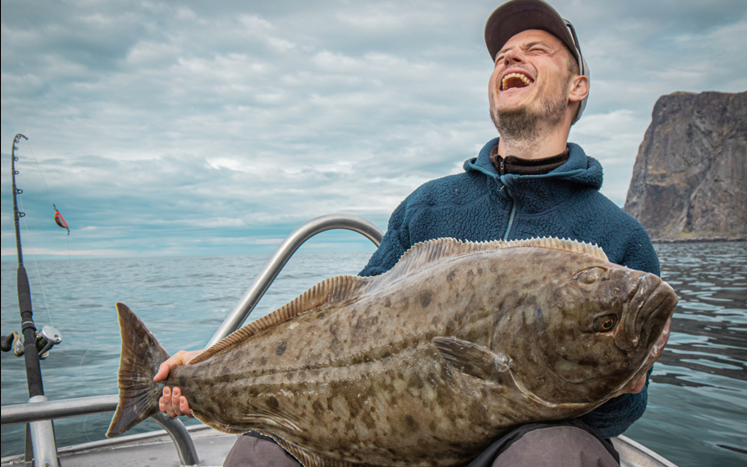
Alaska’s vast, icy waters are a fisherman’s paradise, renowned for producing some of the largest and most sought-after fish in the world. Among them, the Pacific halibut stands out as a true giant, often dubbed the “barn door” for its massive size. When an Alaskan angler reels in a record-breaking halibut, it’s a moment of triumph that echoes through fishing communities worldwide. These colossal catches are not just about the fish—they’re stories of endurance, skill, and the untamed power of nature. In this in-depth guide, we explore the historic catch of a record-breaking halibut, the techniques that made it possible, and why Alaska remains the ultimate destination for trophy anglers.
You may also like to read “ Fishing Charter for Your Next Fishing Trip” article.
The Legendary Catch: A 459-Pound Halibut

459-Pound Halibut
In June 1996, Alaskan angler Jack Tragis made history by landing a 459-pound Pacific halibut off the coast of Dutch Harbor in the Aleutian Islands. Recognized by the International Game Fish Association (IGFA) as the all-tackle world record, this monumental catch remains unmatched nearly three decades later. Using a Shakespeare Sturdy Stick rod and a PENN Senator 4/0 reel, Tragis battled the fish for over two hours, pulling it from a depth of several hundred feet. The halibut, measuring over 8 feet long, was a testament to the extraordinary size these flatfish can reach in Alaska’s nutrient-rich waters.
Tragis’s achievement was no fluke—it was the result of skill, patience, and adherence to strict IGFA rules, which required him to land the fish solo without assistance. The catch drew global attention, cementing Alaska’s reputation as a premier fishing destination and inspiring anglers to chase their own record-breaking halibut.
The Grueling Fight
Reeling in a 459-pound halibut is a test of physical and mental endurance. Tragis fought the fish from a small boat, using a bottom-jigging technique that involved dropping a weighted lure to the ocean floor to entice the halibut. The fish resisted fiercely, stripping line and diving repeatedly, forcing Tragis to maintain constant pressure to avoid losing it. After a two-and-a-half-hour struggle, he finally brought the massive fish to the surface, where it was gaffed and hoisted aboard. The sheer scale of the fish—wider than the boat’s deck—left Tragis and his crew in awe, marking a moment that would define his legacy.
Why This Record Endures
Tragis’s catch stands out not only for its size but for its legitimacy. Unlike some oversized halibut caught with harpoons or multiple anglers, Tragis’s fish was landed single-handedly, meeting IGFA’s stringent criteria for a world record. The 459-pound fish surpassed previous records and has withstood the test of time, even as fishing technology has advanced. Its enduring status highlights the rarity of such a catch and the unique conditions of Alaska’s fisheries, where halibut thrive in deep, cold waters.
Why Alaska is a Halibut Haven
Alaska’s coastal waters, stretching from the Gulf of Alaska to the Bering Sea, are a breeding ground for monster Pacific halibut. These bottom-dwelling flatfish, known for their diamond-shaped bodies and powerful fights, can grow to over 500 pounds and live for decades. The state’s fishing ports—Homer, Kodiak, Seward, and Gustavus—attract anglers from around the world, each hoping to hook a “barn door” of their own. Halibut fishing is deeply woven into Alaska’s culture, blending sport, tradition, and the promise of a bountiful harvest.
The Perfect Environment for Giants
Pacific halibut owe their massive size to Alaska’s pristine marine ecosystem. Deep channels, strong tidal currents, and abundant prey like herring, crab, and octopus create ideal conditions for growth. Unlike other regions, Alaska’s halibut populations are carefully managed by the Alaska Department of Fish and Game (ADFG), ensuring sustainable stocks of large fish. For example, areas like Glacier Bay near Gustavus are known for producing halibut weighing 200 pounds or more, thanks to minimal commercial pressure and rich feeding grounds.
The Role of Fishing Charters
Fishing charters are essential for accessing Alaska’s prime halibut grounds, many of which lie miles offshore in waters too deep for casual anglers. Experienced captains use sonar and GPS to locate halibut hotspots, often at depths of 200–400 feet. Charters like those offered by Alaska Coastal Outfitters provide heavy-duty gear, including 100-pound braided line and large circle hooks, designed to handle trophy fish. A charter in Homer, for instance, might take anglers to the Barren Islands, where halibut congregate in numbers, offering a shot at a record-worthy catch without the exhaustion of fishing in 700-foot depths.
Mastering the Art of Halibut Fishing
Catching a record-breaking requires a combination of technique, equipment, and persistence. Alaskan anglers rely on proven methods tailored to the halibut’s behavior, from bait-soaking to jigging. These techniques, honed over generations, are key to landing a fish that could rival Tragis’s record.
Bait-Soaking: Time-Tested and Reliable
Bait-soaking is the go-to method for fishing, prized for its simplicity and effectiveness. Anglers use stout rods with high-capacity reels spooled with 80–100-pound braided line, paired with a sliding sinker (2–8 pounds) and a leader rigged with two 16/0 circle hooks. Common baits include herring chunks, octopus, or salmon heads, which are lowered to the ocean floor and periodically lifted to release scent. This technique, used by Tragis, attracts this fish by mimicking injured prey. For example, an angler fishing in Kachemak Bay might soak bait near a sandy bottom, drawing a 200-pound from its hiding spot.
Jigging: The Active Approach
Jigging offers a more dynamic alternative, appealing to anglers who enjoy an active fight. Heavy jigs, such as soft plastic octopus lures or metal slabs, are dropped to the bottom and rhythmically lifted to mimic swimming prey. Halibut strike hard, requiring quick hook-sets and strong arms to reel them up. A memorable example is Jay Hicks, who in 2021 caught a 186-pound halibut from a kayak off Kodiak Island using a Savage Gear Sand Eel jig. Jigging is particularly effective in areas like Seward, where tidal currents keep baitfish active, drawing it to the lure.
Iconic Catches in Alaska
Alaska’s waters have produced numerous near-record halibut, each adding to the state’s fishing lore. The table below showcases some of the most notable catches, highlighting the diversity of anglers, locations, and methods.
| Angler | Weight | Location | Year | Details |
|---|---|---|---|---|
| Jack Tragis | 459 lbs | Dutch Harbor | 1996 | IGFA world record, caught solo via bottom jigging. |
| Jack McGuire | 482 lbs | Gustavus, Glacier Bay | 2014 | Harpooned, ineligible for IGFA; yielded 200 lbs of fillets. |
| Jay Hicks | 186 lbs | Kodiak Island | 2021 | Unofficial kayak record, caught jigging from a 14-foot Hobie kayak. |
| Jackson Hobbs | 335 lbs | Homer, Barren Islands | 2014 | Won Homer Jackpot Halibut Derby, caught with charter captain Travis Larson. |
Jack McGuire’s Massive 482-Pounder
In 2014, 76-year-old Jack McGuire from California landed a 482-pound halibut near Gustavus while fishing aboard the charter boat Icy Rose. The 95-inch fish, caught using an octopus-baited circle hook, took 40 minutes to subdue. Due to its size, the crew shot and harpooned the fish for safety, disqualifying it from IGFA records but earning it fame as one of the largest halibut ever caught. McGuire’s catch provided 200 pounds of fillets, shared among his group, showcasing the practical rewards of such a haul.
Jay Hicks’s Kayak Feat
Jay Hicks’s 186-pound halibut, caught in 2021 off Kodiak Island, is a testament to the boldness of kayak fishing. Using a light jigging setup from a 14-foot Hobie Pro Angler kayak, Hicks battled the fish as it towed his kayak across the water. A fellow angler harpooned the halibut to secure it, marking an unofficial kayak world record. Hicks’s story inspires anglers to push boundaries, proving that even small vessels can yield big catches in Alaska’s waters.
Conclusion
The tale of an Alaskan angler reeling in a record-breaking halibut is a celebration of human grit and the wild beauty of Alaska’s waters. Jack Tragis’s 459-pound catch remains the gold standard, a beacon for anglers dreaming of their own “barn door” halibut. With fishing charters, proven techniques, and a marine environment that breeds giants, Alaska offers unmatched opportunities for trophy catches. From McGuire’s massive 482-pounder to Hicks’s kayak triumph, each catch adds to the state’s fishing legacy. Whether you’re a seasoned angler or a first-timer, Alaska’s halibut waters beckon with the promise of adventure. Book your trip, cast your line, and who knows? The next record could bear your name.
Fishing Guides
10 Reasons to Love Jack Fish: The Ocean’s Unsung Heroes
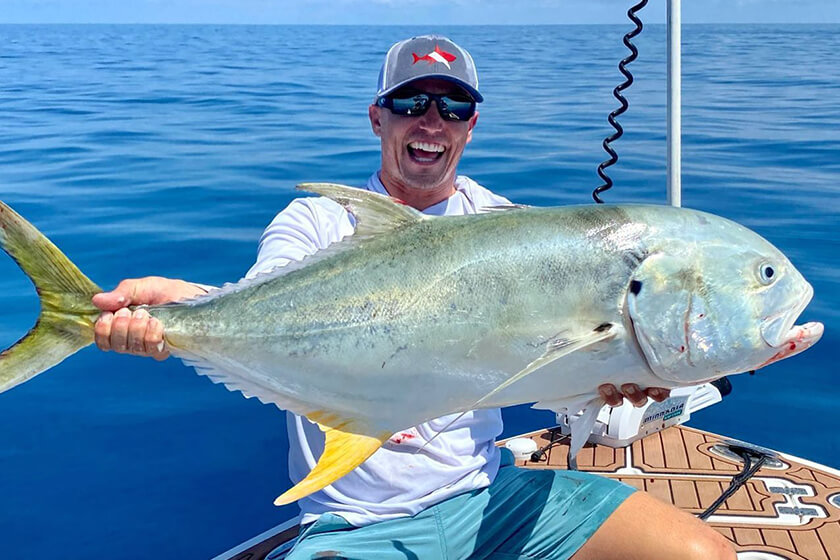
Jack fish, also known as trevally or crevalle jack, are fascinating creatures that often don’t get the recognition they deserve. In this comprehensive guide, we’ll explore ten compelling reasons why these fish are not only important to marine ecosystems but also why they should be appreciated by anglers, marine enthusiasts, and conservationists alike.
You may also like to read “ Are Bass Freshwater or Saltwater?” article.
1. Impressive Strength and Fighting Spirit
The Powerhouses of the Sea

Jack fish
Jack fish are renowned for their incredible strength and tenacity, making them a favorite among sport fishermen. These muscular fish can put up an exhilarating fight that tests even the most experienced anglers.
Built for Speed and Power
With their streamlined bodies and powerful tails, jack fish are built for both speed and endurance. Their aerodynamic shape allows them to cut through water effortlessly, reaching impressive speeds when pursuing prey or evading predators.
Table: Jack Fish Speed Comparison
| Species | Top Speed (mph) |
|---|---|
| Giant Trevally | 25-30 |
| Crevalle Jack | 20-25 |
| Blue Runner | 15-20 |
2. Wide Distribution and Adaptability
Global Presence
This fish are found in tropical and subtropical waters around the world, from the Atlantic and Pacific Oceans to the Mediterranean Sea. This wide distribution is a testament to their adaptability and resilience.
Habitat Versatility
These fish can thrive in various marine environments, including:
- Coral reefs
- Rocky shorelines
- Open ocean
- Estuaries
Their ability to adapt to different habitats makes them an important species in multiple ecosystems.
For more information on jack fish distribution, visit the IUCN Red List.
3. Important Role in Marine Ecosystems
Maintaining Balance
This fish play a crucial role in maintaining the balance of marine ecosystems. As predators, they help control the populations of smaller fish and invertebrates, preventing any single species from dominating the ecosystem.
Food Source for Larger Predators
In turn, jack fish serve as a food source for larger predators such as sharks, billfish, and marine mammals. This position in the food chain makes them an essential link in the transfer of energy through marine ecosystems.
4. Exciting Target for Sport Fishing
Challenging Catch
The strength and fighting spirit of jack fish make them an exciting target for sport fishermen. Their powerful runs and acrobatic jumps provide an adrenaline-pumping experience that keeps anglers coming back for more.
Diverse Fishing Methods
Jack fish can be caught using various fishing methods, including:
- Trolling
- Casting
- Jigging
- Fly fishing
This versatility adds to their appeal among different types of anglers.
For tips on jack fish fishing techniques, check out this comprehensive guide from Salt Strong.
5. Delicious and Nutritious Seafood
Culinary Versatility
While not as widely consumed as some other fish species, jack fish can be a delicious addition to various cuisines. Their firm, white flesh is suitable for grilling, baking, or frying.
Nutritional Benefits
Jack fish are an excellent source of:
- Lean protein
- Omega-3 fatty acids
- Vitamins B6 and B12
- Selenium
These nutrients contribute to heart health, brain function, and overall well-being.
Table: Nutritional Content of Jack Fish (per 100g)
| Nutrient | Amount |
|---|---|
| Calories | 117 |
| Protein | 23g |
| Fat | 2.3g |
| Omega-3 | 0.3g |
6. Fascinating Behavior and Social Structure
Schooling Behavior
Many jack fish species form large schools, creating impressive underwater spectacles. These schools can comprise thousands of individuals, moving in synchronized patterns to confuse predators and improve feeding efficiency.
Complex Social Interactions
Within these schools, jack fish exhibit complex social behaviors, including:
- Hierarchical structures
- Cooperative hunting strategies
- Courtship rituals
These behaviors make them an interesting subject for marine biologists and underwater photographers alike.
7. Importance in Commercial Fisheries
Economic Value
Jack fish contribute significantly to commercial fisheries in many parts of the world. Their abundance and wide distribution make them an important resource for coastal communities that rely on fishing for their livelihoods.
Sustainable Fishing Practices
While jack fish populations are generally stable, responsible fishing practices are crucial to ensure their long-term sustainability. Many fisheries management organizations are working to implement measures that protect jack fish stocks while supporting local economies.
For more information on sustainable fishing practices, visit the Marine Stewardship Council.
8. Evolutionary Success Story
Ancient Lineage
Jack fish belong to the Carangidae family, which has a fossil record dating back to the Eocene epoch, approximately 56 to 33.9 million years ago. Their long evolutionary history is a testament to their adaptability and success as a species.
Diverse Adaptations
Over millions of years, jack fish have developed various adaptations that have contributed to their success, including:
- Powerful swimming muscles
- Excellent eyesight
- Sensitive lateral lines for detecting prey
These adaptations have allowed them to thrive in diverse marine environments around the world.
9. Contribution to Marine Research
Model Species
Jack fish serve as model species for various marine research studies, including:
- Migration patterns
- Predator-prey relationships
- Effects of climate change on marine ecosystems
Their wide distribution and relatively large population sizes make them ideal subjects for long-term studies.
Tagging Programs
Many jack fish species are part of tagging programs that help researchers track their movements and behavior. These programs provide valuable data on:
- Migration routes
- Growth rates
- Population dynamics
For more information on marine tagging programs, visit the NOAA Fisheries website.
10. Aesthetic Appeal and Underwater Photography
Photogenic Subjects
Jack fish, particularly species like the giant trevally, are popular subjects for underwater photographers. Their sleek, silvery bodies and the impressive formations they create when schooling make for stunning images.
Diving Attractions
Many diving destinations around the world promote jack fish encounters as a major attraction. The opportunity to swim alongside large schools of these powerful fish creates unforgettable experiences for divers and snorkelers.
Table: Popular Diving Spots for Jack Fish Encounters
| Location | Best Time to Visit |
|---|---|
| Palau | Year-round |
| Cabo San Lucas, Mexico | June to November |
| Great Barrier Reef, Australia | April to November |
| Red Sea, Egypt | March to May, September to November |
Conclusion: Celebrating the Unsung Heroes of the Ocean
Jack fish truly are the unsung heroes of our oceans. From their crucial role in maintaining marine ecosystem balance to their importance in both sport and commercial fishing, these powerful and adaptable fish deserve our appreciation and respect.
Their wide distribution, fascinating behaviors, and evolutionary success story make them not only an important species for marine biodiversity but also a subject of wonder for marine enthusiasts, researchers, and conservationists alike.
As we continue to learn more about these remarkable fish, it’s important to recognize their value and work towards their conservation. By implementing sustainable fishing practices and supporting marine research, we can ensure that future generations will also have the opportunity to appreciate and benefit from these amazing creatures.
Whether you’re an angler looking for an exciting catch, a marine biologist studying ecosystem dynamics, or simply someone who appreciates the wonders of marine life, there are countless reasons to love jack fish. Their strength, adaptability, and importance in our oceans make them truly worthy of our admiration and protection.
So the next time you see a school of jack fish while diving, catch one on a fishing trip, or simply read about their latest research findings, take a moment to appreciate these incredible fish and the vital role they play in our oceans.
Fishing Guides
Are Bass Freshwater or Saltwater? A Comprehensive Guide
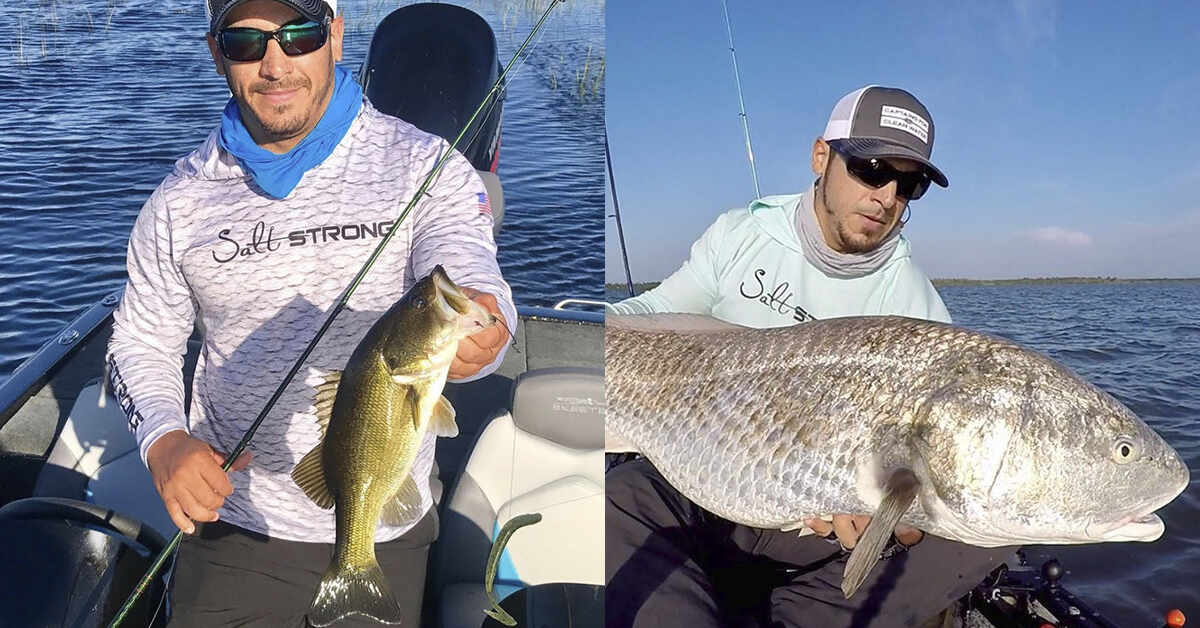
Bass are among the most sought-after fish for anglers globally, celebrated for their tenacious fights and culinary appeal. But one question often puzzles enthusiasts and novices alike: Are bass freshwater or saltwater fish? The answer isn’t black-and-white. Bass encompass a variety of species across different families, with some flourishing in freshwater lakes, others ruling saltwater oceans, and a few adapting to both. In this in-depth guide, we’ll unravel the habitats, species, and behaviors of bass, shedding light on their diverse aquatic worlds. Whether you’re an angler gearing up for your next catch or simply intrigued by marine life, this article will provide clarity and insight.
You may also like to read “ What is Bass Fish Called in India” article.
For a broader understanding of fish habitats, the National Geographic resource on fish species offers a fantastic starting point, detailing how environment shapes aquatic life.
What Are Bass? Understanding the Basics
To tackle the question—are bass freshwater or saltwater?—we first need to define “bass.” The term applies to multiple fish species, primarily from the Centrarchidae (freshwater sunfish family) and Serranidae (sea bass family). These fish share predatory instincts and sturdy builds, but their preferred waters set them apart.
In North America, “bass” typically conjures images of freshwater icons like largemouth or smallmouth bass. On the coasts, however, it might refer to saltwater dwellers like striped bass or black sea bass. This dual identity fuels confusion, making it essential to examine bass by species and habitat.
Why the Habitat Matters

Bass Freshwater or Saltwater
A fish’s habitat influences its physiology, feeding habits, and lifecycle. Freshwater bass excel in still or slow-moving waters like ponds and rivers, while saltwater bass thrive in dynamic oceanic conditions. Some bass, dubbed euryhaline, navigate both realms with ease. Knowing their environments aids anglers in honing techniques and conservationists in safeguarding ecosystems. Let’s dive into the main bass categories.
Freshwater Bass: Kings of Lakes and Rivers
Freshwater bass reign supreme in inland waters, particularly in the U.S., where they belong to the Centrarchidae family. Far fiercer than their sunfish kin, these species are angler favorites. Below are the standout freshwater bass:
Largemouth Bass (Micropterus salmoides)
The largemouth bass is North America’s freshwater superstar. With its oversized mouth and explosive jumps, it thrives in warm, vegetated waters—think lakes, ponds, and sluggish rivers. It ambushes prey like minnows, frogs, and insects with precision.
- Habitat: Purely freshwater—lakes, reservoirs, rivers.
- Range: Native to North America, spanning Canada to Mexico.
- Fun Fact: The record largemouth bass, landed in 1932, tipped the scales at 22 pounds, 4 ounces!
Largemouth bass anchor the idea that bass are freshwater fish, a notion reinforced by events like those run by Major League Fishing.
Smallmouth Bass (Micropterus dolomieu)
Smallmouth bass, or “smallies,” favor cooler, clearer waters—rocky rivers, streams, and deep lakes. Their bronze hues and vigorous battles make them a thrill to reel in.
- Habitat: Exclusively freshwater—rivers, lakes, streams.
- Range: Eastern North America, with introduced populations elsewhere.
- Example: In Lake Erie, smallmouth bass patrol rocky zones, feasting on crayfish.
Here’s a quick comparison of these freshwater titans:
| Species | Preferred Water Temp | Key Prey | Best Fishing Season |
|---|---|---|---|
| Largemouth Bass | 70-85°F | Fish, frogs, insects | Spring/Summer |
| Smallmouth Bass | 60-75°F | Crayfish, minnows | Summer/Fall |
Saltwater Bass: Rulers of the Oceans
While freshwater bass dominate inland, saltwater bass command the seas. These belong to the Serranidae family, encompassing groupers and sea bass, and are built for coastal and open-water life.
Black Sea Bass (Centropristis striata)
A staple along the U.S. Atlantic coast, black sea bass haunt rocky bottoms, reefs, and wrecks. Smaller than largemouths, they’re prized for their taste.
- Habitat: Saltwater only—coastal waters, offshore reefs.
- Range: Maine to Florida.
- Fun Fact: They shift colors to camouflage!
Striped Bass (Morone saxatilis)
Striped bass, or “stripers,” defy simple labels. Anadromous by nature, they spawn in freshwater rivers but live mostly in saltwater estuaries and oceans. Some, however, adapt to freshwater reservoirs year-round.
- Habitat: Mainly saltwater, with freshwater spawning.
- Range: Atlantic coast, plus Pacific introductions.
- Example: Chesapeake Bay sees stripers swarm rivers each spring.
Learn more about their migration at NOAA Fisheries.
Bass That Bridge the Gap: Bass Freshwater and Saltwater Adaptations
Some bass defy categorization, thriving in both freshwater and saltwater thanks to remarkable adaptability.
Striped Bass: A Dual-Life Example
Striped bass epitomize versatility. Hatched in freshwater, they mature in saltwater, preying on fish like menhaden. Yet, in landlocked spots like Lake Texoma, they live solely in freshwater.
- Why It Works: Euryhaline traits let them adjust to salinity shifts.
- Fishing Tip: Target transitioning stripers in estuaries with live eels.
White Bass (Morone chrysops)
White bass are freshwater natives of North American lakes and rivers but tolerate brackish estuarine waters. Related to stripers, they showcase the bass family’s flexibility.
Here’s a table of bass with dual-habitat potential:
| Species | Primary Habitat | Secondary Habitat | Adaptation |
|---|---|---|---|
| Striped Bass | Saltwater | Freshwater | Euryhaline physiology |
| White Bass | Freshwater | Brackish | Salinity tolerance |
Comparing Freshwater and Saltwater Bass: A Detailed Table
To clarify distinctions, here’s a comprehensive table of key bass species:
| Species | Habitat | Family | Typical Range | Notable Trait |
|---|---|---|---|---|
| Largemouth Bass | Freshwater | Centrarchidae | North America | Large mouth for ambushing prey |
| Smallmouth Bass | Freshwater | Centrarchidae | Eastern North America | Prefers rocky, clear waters |
| Black Sea Bass | Saltwater | Serranidae | Atlantic coast of U.S. | Color-changing ability |
| Striped Bass | Saltwater/Freshwater | Moronidae | Atlantic coast, landlocked lakes | Anadromous migration |
| White Bass | Freshwater/Brackish | Moronidae | Central U.S., some estuaries | Schooling behavior |
Why Does This Matter to Anglers?
The freshwater-or-saltwater distinction shapes fishing tactics. Freshwater bass anglers cast lures like crankbaits in shallow waters, while saltwater pursuits often demand boats and heavier gear for trolling or bottom fishing.
Take largemouth bass in Florida’s Lake Okeechobee: anglers use spinning rods near lily pads. Contrast that with striped bass in San Francisco Bay, where trolling with live anchovies rules. Habitat drives the approach.
For top freshwater tips, see our guide on Best Lures for Largemouth Bass.
Ecological and Culinary Importance of Bass
Bass are ecological linchpins and kitchen delights. Freshwater species like largemouths regulate lake ecosystems by preying on smaller fish. Saltwater bass, like black sea bass, bolster marine food chains.
On the plate, largemouth bass yield mild, flaky meat ideal for grilling, while black sea bass shine in gourmet dishes. Try this Grilled Sea Bass Recipe from BBC Good Food.
Common Misconceptions About Bass Habitats
Many assume all bass are freshwater fish, thanks to largemouth and smallmouth fame. Yet, black sea bass debunk this. Another myth? Striped bass are saltwater-only—they’re not, thriving in both worlds.
Conclusion: So, Are Bass Freshwater or Saltwater?
It hinges on the species. Largemouth and smallmouth bass are freshwater exclusives, dominating inland waters. Black sea bass are saltwater natives of coastal reefs. Striped bass straddle both, adapting to saltwater life and freshwater spawning or residency. This variety makes bass a captivating study and a fishing treasure.
Next time you’re by a lake or sea, ponder the bass below. Freshwater warriors or saltwater champs? The answer’s as diverse as they are. Explore more with our Top Saltwater Fishing Spots guide and fish smarter!
-

 Fishing Guides1 year ago
Fishing Guides1 year agoThe Secret to Catching More Catfish: Chicken Gizzards as Bait
-
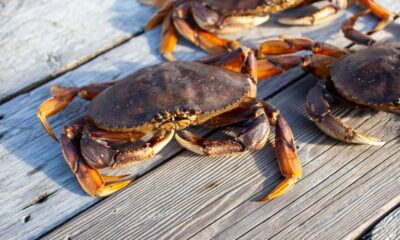
 Fishing Guides3 months ago
Fishing Guides3 months agoWhy Is Dungeness Crab Season So Popular?
-
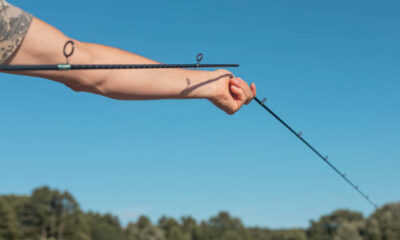
 Equipment8 months ago
Equipment8 months agoHow to Repair a Broken Fishing Rod Tip Like a Pro
-
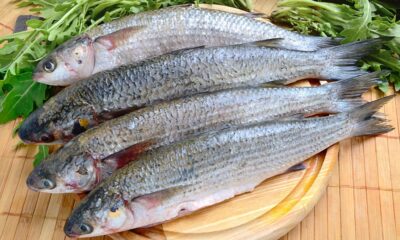
 Fishing Guides1 year ago
Fishing Guides1 year agoThe Truth About Mullet Fish: Is It a Delicious and Nutritious Fish?
-
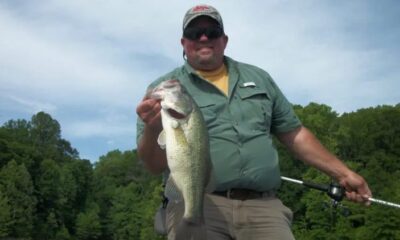
 Fishing Guides1 year ago
Fishing Guides1 year agoUncovering the Secrets of Bluegill Largemouth Bass Hybrids: What You Need to Know
-

 Fishing Guides1 year ago
Fishing Guides1 year ago10 Secrets to Successful Full Moon Fishing
-
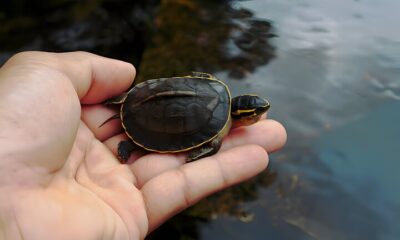
 Fishing Guides11 months ago
Fishing Guides11 months agoHow to Trap Snapping Turtles Safely: Every tip you need to know
-

 Fishing Guides1 year ago
Fishing Guides1 year agoExploring the flavors of snapper: What does it really taste like?
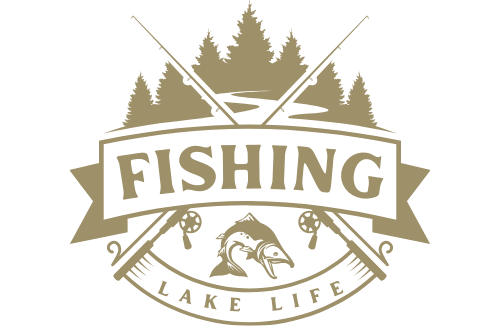
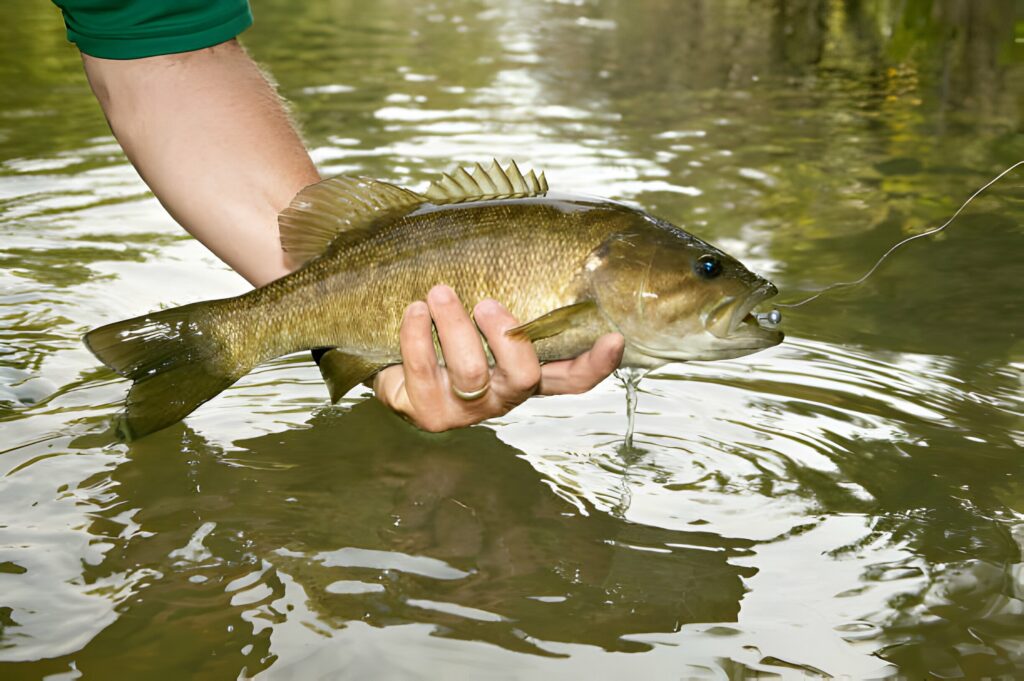

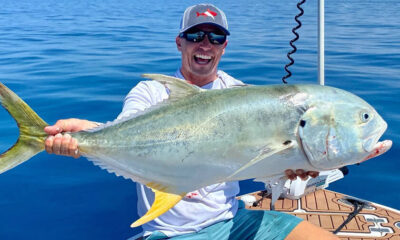

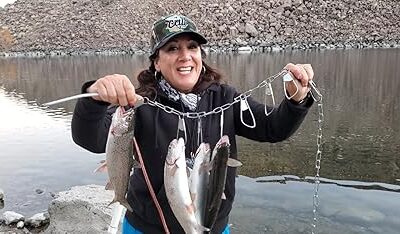



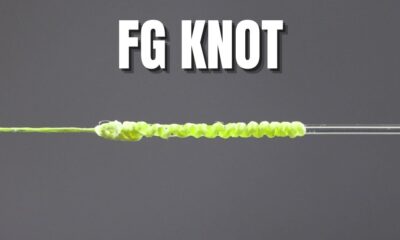

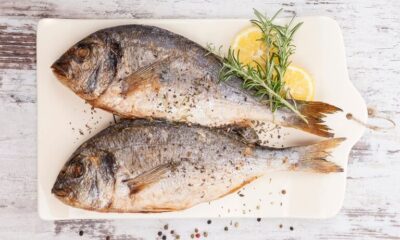






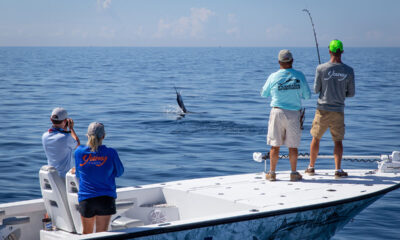
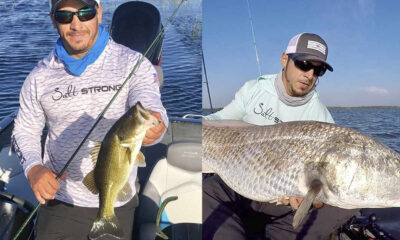
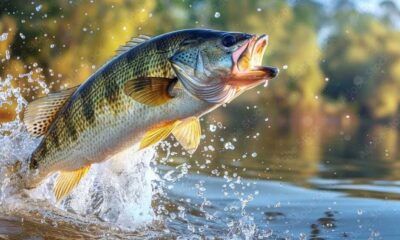
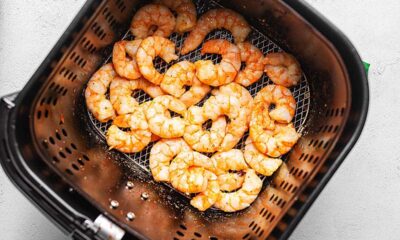

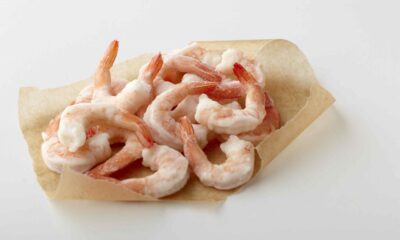



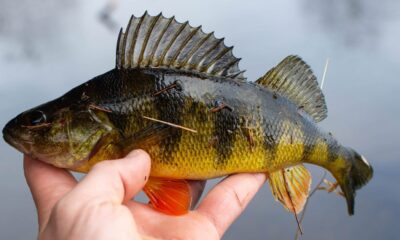

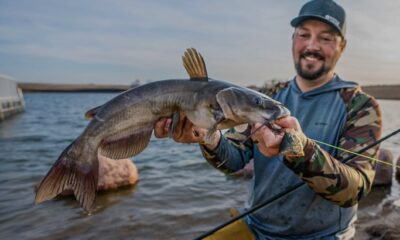

Pingback: Are Bluegill Good to Eat? Top 6 Tips & Comprehensive Guide - Lake Life Fishing